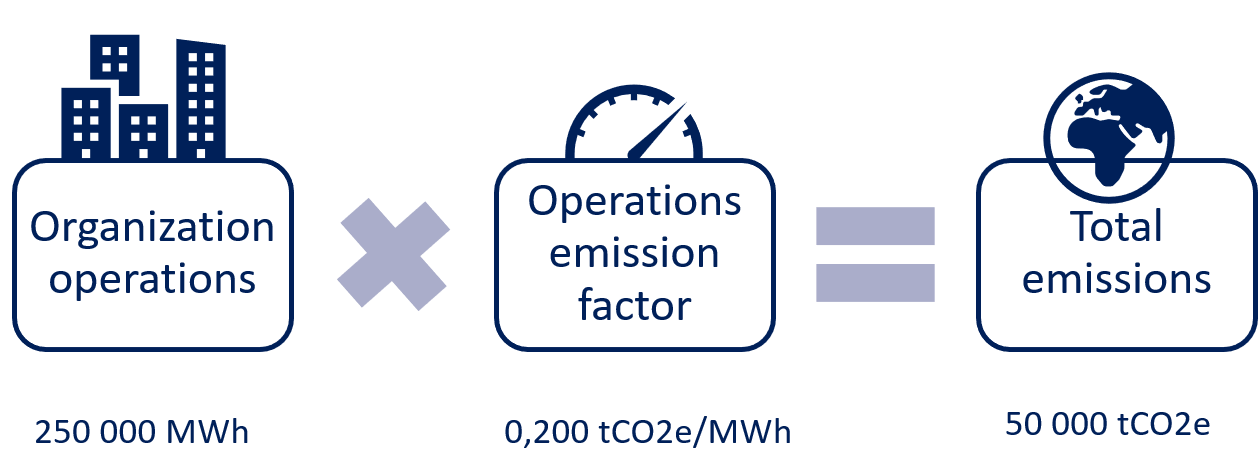Are you looking to reduce your company’s carbon footprint but don’t know where to start? Knowing how to measure carbon footprint of a company is a great first step. Doing so can help you determine which business operations contribute the most to carbon emissions, identify opportunities for reducing business carbon footprint, and track progress over time.
Table of Contents
How to Measure Carbon Footprint of a Company
It’s important for businesses to know their carbon footprint in order to make informed decisions about reducing their environmental impact. How to measure carbon footprint of a company?
Business carbon footprint refers to the total amount of greenhouse gas emissions that come from business operations.
There are a number of ways to measure carbon emissions, but the most common method is to calculate the greenhouse gas emissions from business activities.
The first step in measuring your company’s carbon footprint is to establish a baseline. This will give you a starting point to track your progress as you work to reduce your carbon emissions.
There are a number of ways to establish a baseline, but the most common method is to use data from the previous year. Once you have your baseline, you can begin to measure your emissions from all of your business operations.
This includes everything from the electricity you use to the transportation of your products. The most important thing to remember when you’re measuring your CO2 emissions is to be as accurate as possible.
Once you have your emissions activity data, you can begin to work on reducing your company’s GHG emissions.
This can be done by investing in renewable energy, using more efficient methods of transportation, or reducing the amount of waste your company produces.
Remember, your company’s carbon footprint is just one part of your overall environmental impact. There are a number of other emission factors that you have to consider when you’re working to reduce your climate impact.
Determine Which Activities Contribute the Most to GHG Emissions
The first step in measuring your company’s carbon footprint is to determine which activities and operations contribute the most to emissions.
This can be done by conducting a carbon audit, which is an analysis of consumption data in identifying where greenhouse gas emissions come from.
Once you know where your company’s GHG emissions come from, you can begin to take steps to reduce them. You may find that some greenhouse gas emissions are easier to reduce than others, but every little bit helps.
Reducing your company’s carbon footprint is not only good for the environment, but it can also save you money.
If you’re not sure where to start, there are a number of carbon footprint calculators available online that can help you find those emission hotspots.
Once you have a baseline, you can begin working on reducing your company’s impact on the environment.
Identify Opportunities for Reducing Emissions
As small business owners strive to be more sustainable, many are looking for ways to reduce their carbon footprint. One way to do this is by improving processes or implementing new technologies that can help lower emissions.
There are a number of ways companies can go about doing this, and it really depends on the specific industry and operations.
But some common opportunities for reducing emissions include:
Improving energy efficiency
This can be done through a variety of measures such as upgrading equipment insulation and lighting.
Switching to renewable energy sources
This can include anything from solar and wind power to geothermal and hydroelectric.
Improving transportation
This can involve using more fuel-efficient vehicles, carpooling or ride-sharing, and even promoting remote work.
Implement Changes and Track Progress Over Time
Tracking your emissions allow you to identify areas where you are emitting the most greenhouse gases and focus your efforts on reducing those emissions.
To track your emissions, you will need to gather activity data on your energy use, waste, and transportation. Data collection can be done through an energy audit, tracking your waste production, and measuring your transportation emissions.
After data collection, you can begin to implement changes that will help reduce your emissions.
One way for small business owners to reduce emissions is to switch to renewable energy sources. You can do this by installing solar panels or wind turbines.
Another way to reduce your emissions is to improve your energy efficiency. Upgrade your insulation, switch to energy-efficient lighting, and use energy-efficient appliances.
Once you have implemented changes to reduce your emissions, it is important to track your progress over time to ensure that the reductions are being achieved effectively.
To do this, you can compare your emissions data from one year to the next. This will help you to identify any areas where your emissions have increased and make changes to reduce those emissions.
 (Source)
(Source)
Engage Employees in Climate Action
Engaging your employees in climate action can help further reduce your company’s carbon footprint.
Here are 5 ways to do it.
1. Educate Them on the Current Climate Crisis
Make sure your employees are aware of the issue of climate change and the importance of taking action to reduce their carbon footprint.
You can do this by sharing articles, hosting educational events, or even incorporating climate change into your company’s mission statement.
2. Encourage Them to Take Action
Once your employees are educated on the issue, encourage them to take action to reduce their carbon footprint. This could include carpooling to work, taking public transportation, or working remotely.
3. Set the Example
As a business owner, you need to set an example for your employees.
If you’re not taking steps to reduce your company’s carbon footprint, how can you expect them to do so?
Make sure you’re leading by example and taking steps to reduce your own carbon footprint.
4. Offer Incentives
Incentivizing employees to take climate action can be a great way to get them on board. This could include offering subsidies for employees who carpool, take public transportation, or work remotely.
5. Make It a Company-Wide Initiative
Making climate action a company-wide initiative will show your employees that you’re serious about reducing your company’s carbon footprint. This could include setting goals, tracking progress, and involving everyone in the initiative.
FAQs in Relation to How to Measure Carbon Footprint of a Company
What are the four major steps of measuring carbon footprints?
The four major steps on how to measure carbon footprint of a company are:
1. Determine the Company’s Total Emissions for the Year
This can be done by calculating emissions from all sources, including energy use, transportation, and waste.
2. Convert the emissions into a common unit, such as metric tons of carbon dioxide equivalent (CO2e).
3. Compare the company’s emissions to relevant benchmarks or standards.
This will help put the company’s carbon footprint into perspective and identify emission hotspots where improvement is needed.
4. Take Action to Reduce the Company’s Carbon Footprint
This may involve implementing energy efficiency measures, investing in renewable energy, or offsetting emissions through carbon offsets or other means.
What is the carbon footprint of a business?
A company’s carbon footprint is the total amount of carbon dioxide and other greenhouse gases emitted by the company over a period of time, usually a year.
How do you evaluate a company’s carbon risk?
There are a few ways to measure a company’s carbon risk. One way is to measure the company’s carbon footprint. This can be done by looking at the company’s emissions, both direct and indirect, over a certain period of time.
Another way to measure carbon risk is to look at the company’s energy use. Look at the amount of energy the company uses, as well as the sources of that energy.
What instrument measures carbon footprint?
A carbon footprint calculator.
Conclusion
When it comes to going green, learning how to measure carbon footprint of a company is a great first step. By determining which activities and operations contribute the most emissions, you can identify emission hotspots that could turn into opportunities for improvement.
And by tracking progress over time, you can ensure that your efforts are having the desired effect. So don’t wait – take action today to start shrinking your company’s ecological footprint!





